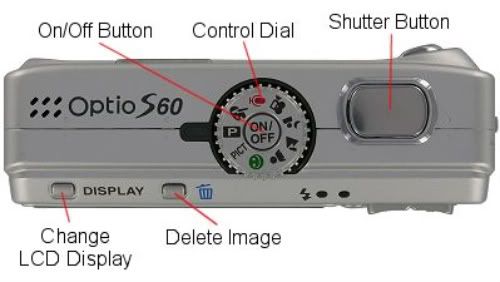
Information Page.
Photographing Fish - part II.
On my previous web page, Steve said a bit about how to present your prize catch to the camera and suggested avoiding the obvious pitfalls of rubbish backgrounds. Such important details are, of course, not confined to the use of digital photography so now he gets down to the nitty gritty :-
With the relative low-price of compact digital cameras ~ aka Point & Shoot jobs, it is so easy to take several shots and quickly review each in turn in the hope that just one will turn out OK. However, with a bit of thought and by adapting a few more of Henry Gilbey’s tips it’s possible to improve the odds and get some good results from most digital 'Point & Shoot' cameras.
I know that a lot of anglers use a digital P&S camera, rather than an expensive, high-end SLR with inter-changeable lenses and filters. It’s very much a matter of ease of use and the fact that their compact (the clue is in the name) size makes the digital P & S model the favoured camera for anglers. Of course if it’s a water-proof model, then so much the better if you should drop it in the drink.
So ~ is it possible to take professional techniques and apply them to the average angler (such as me), let loose with his or her cheap and cheerful P & S camera?
I think it is and here are a few more ideas for you to try, based on my adaptations of 'Henry’s golden rules' to suit the average angling snapper with a £50 - £150, fit-in-the-pocket digital.
To get the best results out of your camera you’ll need to be familiar with just a few of its basic functions (there could be many) and optional ‘manual’ effects. Most compact cameras are auto-focus, so that’s one thing you don’t need to worry too much about, but there are other ways that you can influence how the camera captures the image.
You can use either the ‘control or mode dial’ which you rotate to select the required setting such as ~ auto, manual, video-clip, landscape, portrait or macro. Alternatively, other cameras feature a ‘menu or mode pad’. This is a 4-way 'joy pad' with an OK selection button in the middle and provides a similar set of options.

The menu or mode pad activates a menu program which is viewed on the image screen and allows you to scroll through each icon option to select pre-set exposure, shutter and aperture settings for sports, macro, landscape, sunset, night-time, snow and beach etc. Some cameras have as many as 50 pre-set modes to cater for virtually every lighting situation, whether the subject is fast or slow moving, or how far from the picture taker the subject is.
I’ll only cover the pre-set modes that I find most useful and say a little bit about why I use them.
Macro mode, which is nearly always depicted by a tulip-style flower.
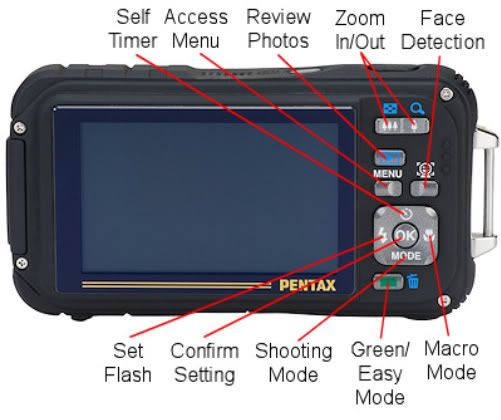
This setting is used for keeping the subject in focus whilst getting very close to it to capture minute detail seldom seen.
Some cameras will focus down to 1cm and at such close range the ultra close-up images are almost equal to a low-power microscope or a high-powered magnifying glass. Macro shots often have an impact and beauty equal to any landscape, but of a world in miniature and you can create some stunning, clear images of fish scale patterns, fish eyes or fin rays or if you’re feeling really arty, a lure or various items of tackle.
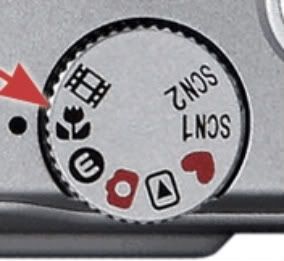
Sunrise ~ reflected, iridescence on the anal fin and scales of a bonefish
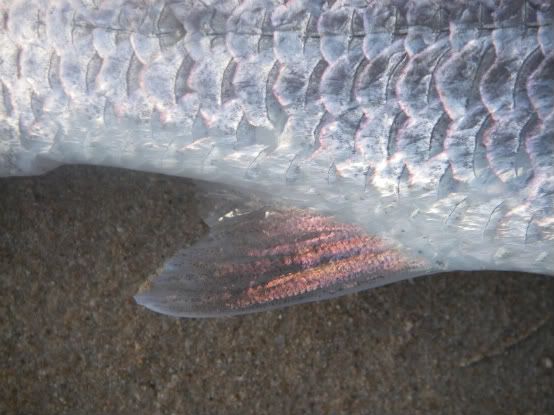
Arty-Farty Abel
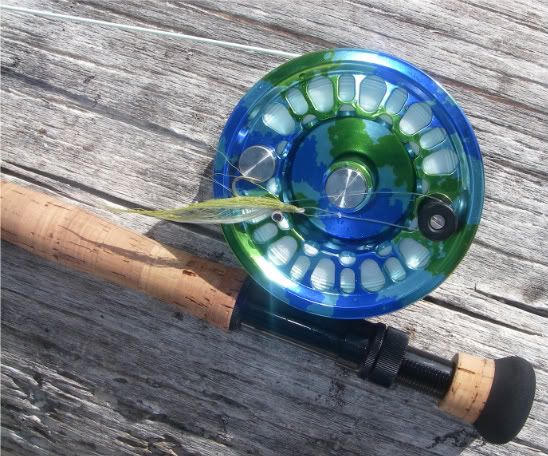
With a bit of thought, Macro is also useful to achieve one of Henry’s trademark shots ~ the -
‘Grip and Grin Shot' ~ with the fish pin-sharp in the foreground and the angler ever so slightly out of focus in the background.
Here’s how ~
Get the angler to hold the fish level with his/ her shoulders, whilst kneeling (you’ll need to kneel or get low too) and don’t worry if the fish partly obscures the angler’s face.
Select the Macro setting using the mode dial or menu pad and position the camera within say a metre of the fish and angler.
I remember Henry emphasising that the eye of the fish is the area of the picture that the viewer’s eye is drawn to first, so with the fishes’ eye positioned as the central ‘target’ in the viewfinder or screen, press the shutter part-way to activate the auto-focus and lock in on the eye, or the most important part of the image may not be in focus.
Once the auto-focus has locked on to the fish (you’ll usually get a green square appear to confirm this or a red square to warn you that it hasn’t managed to focus), at such close range anything in front or behind the fish will be slightly out of focus and the fish will be the centre of attention.
If you want to you can move the camera to the left or right (pan) to get the fish nicely positioned, but don’t move it backwards or forwards or the fish will be out of focus.
Shift the camera up or down slightly to get both fish and angler’s head and shoulders in shot – then fully press the shutter button to take the picture.
JOBFISH.
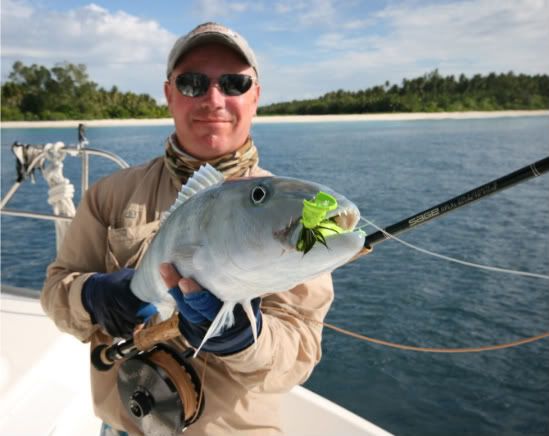
ROOSTERFISH.
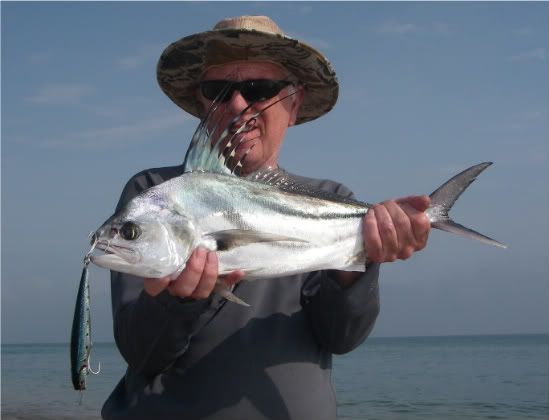
As it’s digital, quickly preview the result and if it didn’t quite work then take a few more, but be ever-mindful that the fish is in an alien and hostile environment, so get it back in the water as quickly as possible.
That should be your number one rule of photographing fish – the welfare of the fish comes before getting the shot, but why not take a few more snaps as it recovers and then swims away? This can be an almost intimate moment ~ so keep low down to capture the release in close up, rather than from a distance, for added impact.
Bone goes home. Shooting close and low to record a bonefish release.
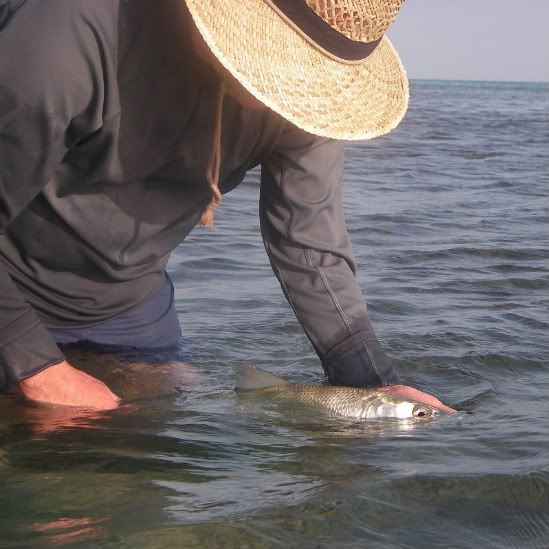
Macro mode is also useful for getting an effect where the eye of the fish is in sharp detail, but the body and tail gradually lose focus, thereby emphasising the head and eye.
This exploits the fact that in macro-mode there is limited ‘depth of field’ a term used to describe the distance in front and behind the subject, between which the image is in sharp focus and beyond which the background or foreground are out of focus.
BLUEFISH.
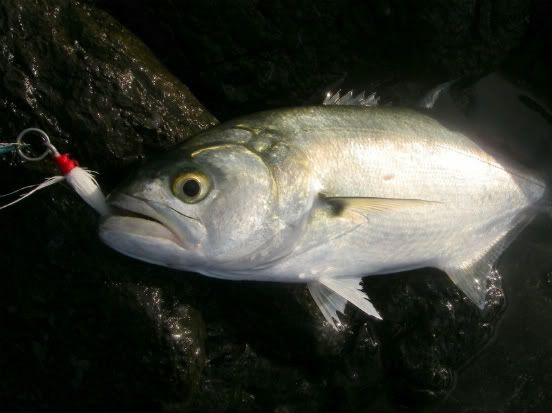
The closer you are to the subject and the more light you let into the lens the shallower the depth of field will be. Macro pushes the depth of field limits to extremes and a wide-angle landscape mode has the opposite effect, so you can get some pretty weird effects if you experiment with depth of field in macro setting.
SPORTS MODE

This is useful if you’re trying to capture something moving at speed ~ a leaping tarpon, an angler casting or birds in flight.
By selecting sports mode you’re telling the camera to open the aperture to let more light in and to compensate for the correct exposure the camera will increase the shutter speed to freeze the action.

A tricky shot ~ low light and fast action.
In this case I didn’t use sports mode so the rod and lure aren’t quite ‘frozen’.
I opted to capture the sunset instead, which leads us on to ……..
SUNSET MODE
Everyone loves a sunset or sunrise shot ~ They make for some of the most atmospheric covers of the BASS mag and there’s a whole section on the BASS forum dedicated to the setting sun, with crimson-streaked skies reflected in oily calm seas.
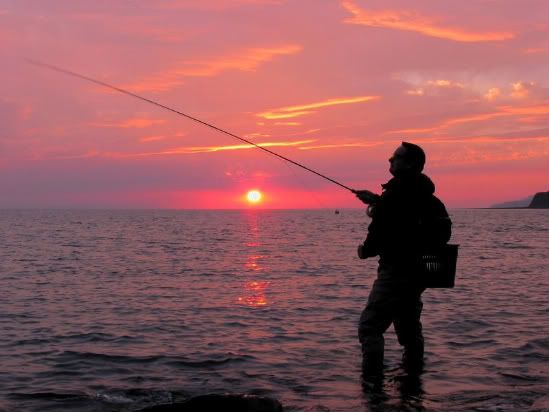
An angler, in silhouette, adds that something special to the shot.
The sunset pre-set mode is your way of informing the camera that less light is actually needed than its light meter is indicating that it needs. Bear in mind you are pointing the camera at a powerful light source (understatement no.3), the camera will automatically set the aperture and shutter speed for the average light intensity, so that the picture isn’t over or under-exposed. They really are clever things these compact P & S jobs.
What you actually want is those glorious colours to be true to life, so you have to force the camera to under-expose the shot by dropping down a stop (1 unit of aperture setting) to get the best out of those yellows, blues, crimsons and golds and the contrasting blacks and vermillions to capture the perfect sunset/sunrise shot.
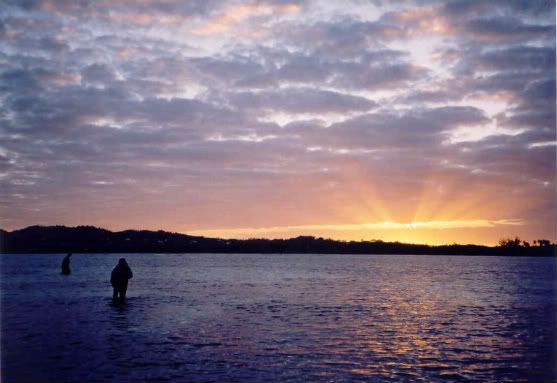
Few people get to see scenes like this, so capture them while you can.
So if your sunset photos are turning out a bit wish-washy, find the sunset setting on your camera and you’ll be amazed at the difference dropping a stop can make.
Sunset and a pretty girl fishing ~ a perfect combination.

I guess most people will already know that you can control the apparent ‘closeness’ to the subject by using the zoom function that all digi cameras have (if yours has a fixed focal length lens then you’ll just have to move closer if you want the fish to fill the shot). Far too many shots are taken from too far away, so you can’t see the detail on the fish, so zoom in and fill the frame.
The zoom function is usually a rocker switch, slider or rotating 'bezel' surrounding the shutter release button and is used to ‘frame’ the subject for (a) zooming in to bring the subject closer or make it appear bigger (also known as ‘telephoto’) or (b) zooming out to make it appear smaller or further away (also know as ‘wide-angle’).
I use the zoom function to get effect (a)when snapping my own fish, as most of them are small and I prefer to use the zoom setting on wide angle to achieve the opposite objective (b)when taking pictures of other people’s fish.
I have to say that the macro on my own little camera is fantastic. In contrast, when I zoom in on a distant angler (for example) it often gives quite poor results. I assume that this is probably because it is more critical to keep everything absolutely still in these circumstances and it's only too easy to shake the camera a tad when you're excited or in a gale of wind. Must keep a steady hand in future! M.L.
If you have any comments or questions about fish, methods, tactics or 'what have you.'get in touch with me by sending an E-MAIL to - docladle@hotmail.com